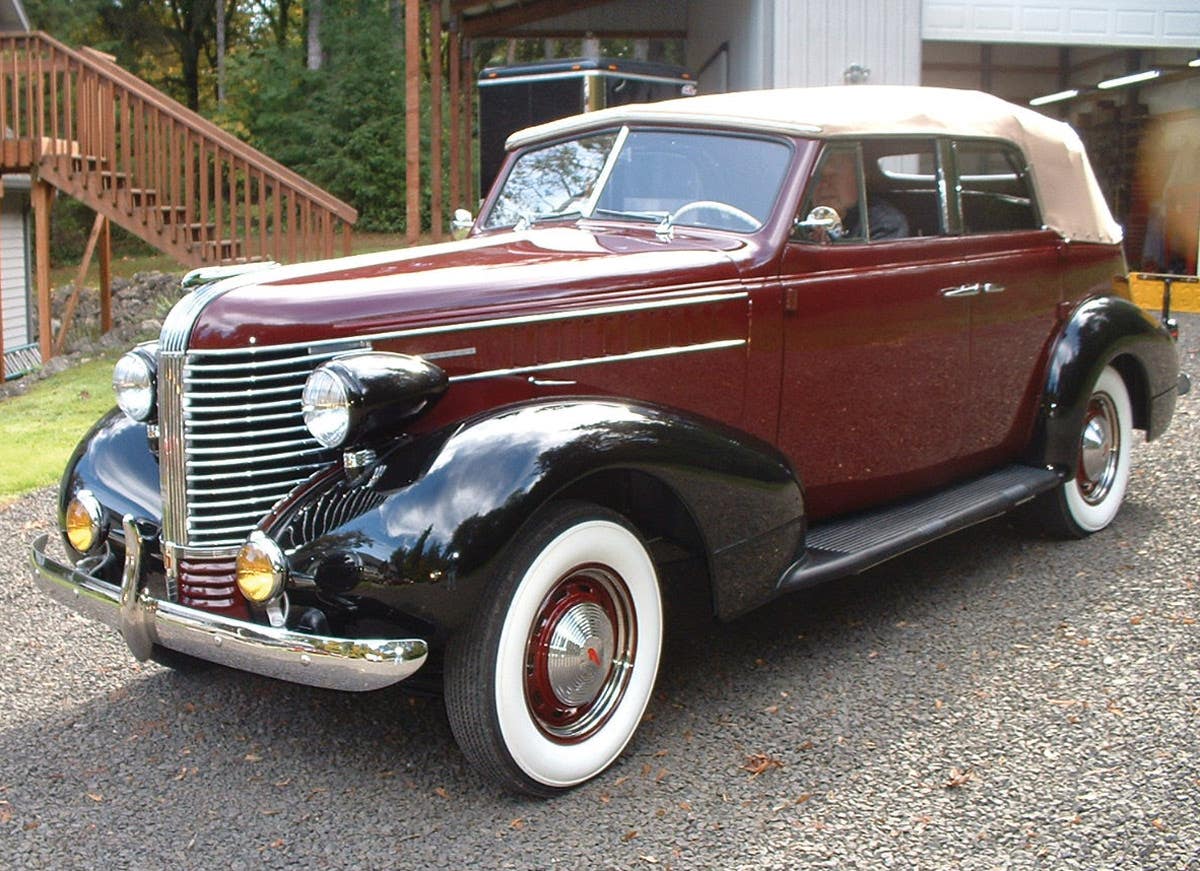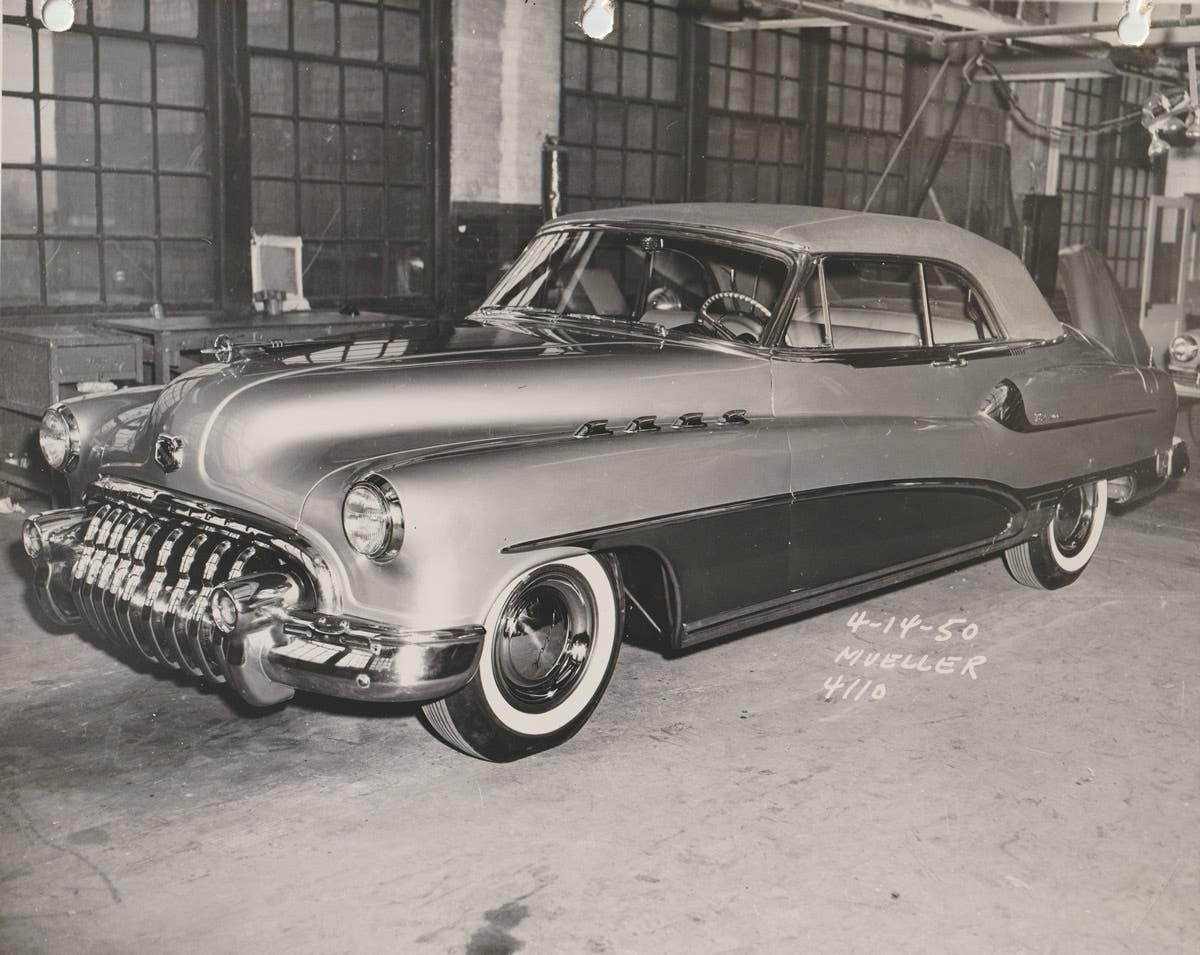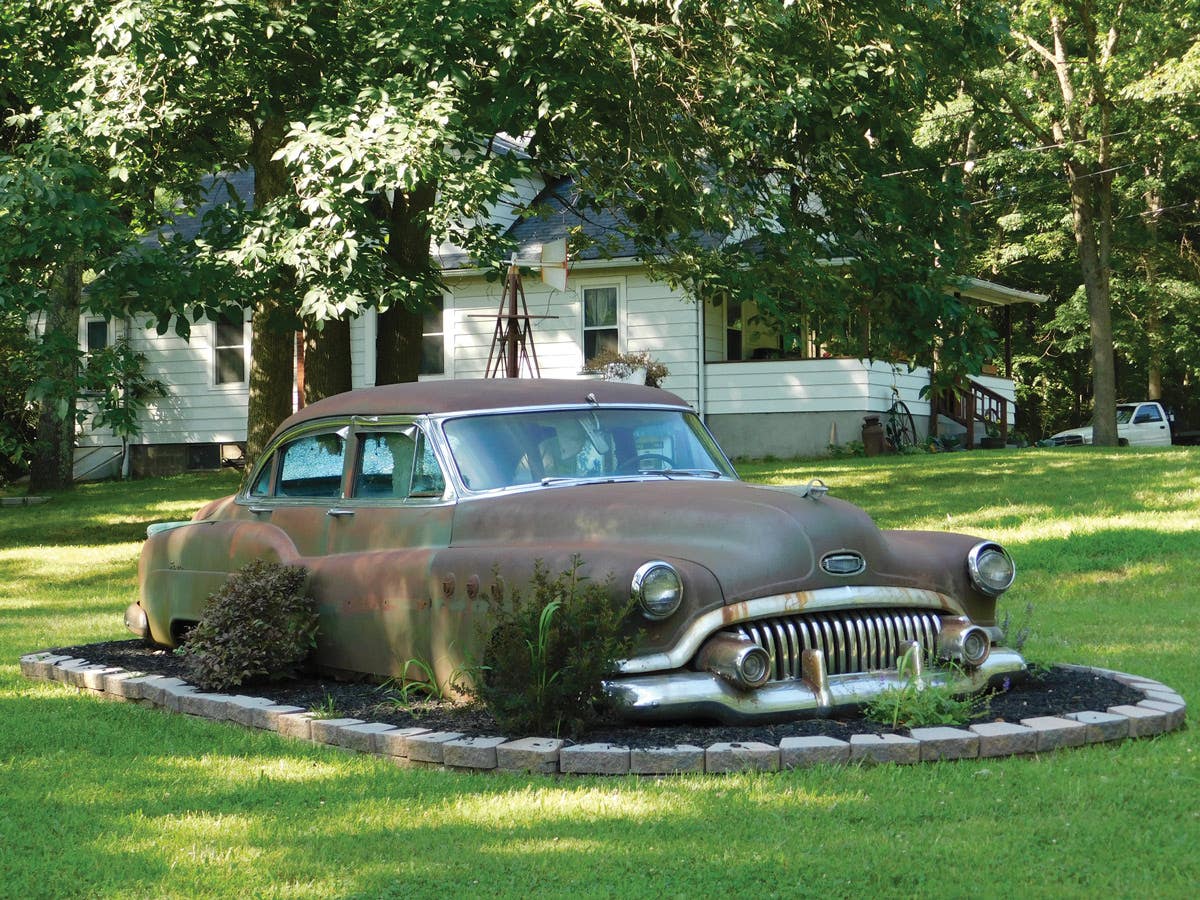Ponchos with panache: Pontiac’s Grand Prix
Popular Grand Prix followed a different path
1964 Pontiac Grand Prix
Pontiac’s first stab at a sports-personal car was the 1957 Bonneville. In 1957 especially, and in 1958 to a high degree, the Bonneville was a true specialty model. It was Star Chief fancy and Chieftain-sized to make it extra rich and sporty at the same time.
In 1959, Pontiac capitalized on the excitement of the model name by making a Bonneville series. These cars were big and rich, but weren’t as unique as the first two Bonnevilles. Pontiac used the original concept to create the Ventura, a small car with the fancy Bonneville-type interior. The most powerful “Tempest” V-8s could be added to Ventura models as optional equipment.
The Ventura never generated tons of sales, but the concept had potential. In 1962, a limited-edition Grand Prix moved into the sports-personal slot. This car was also a “Bonnevillized” Catalina, but with its unique Grand Prix identity. The “GP” had extremely clean body side styling, attractive checkered-flag badges, an eye-catching anodized grille, solid-color vinyl (called Morrokide) upholstery, standard front bucket seats, a center console and a colorful tachometer. This model retailed for $3,490 and buyers quickly scooped up 30,195 of them.
1963 Grand Prix
The standard engine in that first Grand Prix was a 303-hp version of the well-known 389-cube Poncho V-8. Pontiac’s performance-minded buyers could opt for a 353-hp 421 V-8 with a Quadrajet carburetor or a 370-hp edition of the big engine with Tri-Power. The 120-inch Catalina wheelbase was used and both cars were 211.9 inches long. The GP was basically a Thunderbird for about $1,000 less. It created a sensation in the upper, sports-luxury strata of the medium-price-car class. The GP also helped bring customers to Pontiac dealerships in 1962. The company’s dealer stock of cars averaged a 17-day supply versus and average of 37 days for the auto industry as a whole. Ward’s Automotive Yearbook described the first GP as an “ultra two-door hardtop.”
The ’63 Grand Prix was restyled and retained the clean look with no side trim. The new grille emphasized negative space with flat black finish that made the few bright accents standout. The parking lamps were enclosed in the grille. Two unique GP touches were the use of grilled-over tail lamps mounted on the deck lid and a concave rear window treatment. Standard equipment included special solid-color Morrokide upholstery, a wood-grained steering wheel, woodgrained dashboard trim, bucket-type front seats and a center console with a vacuum gage. Grand Prix badges were seen on the rear fender sides. Bright moldings accented the rocker panels.
“If you think the Pontiac Grand Prix gets by just on good looks, you’ve got some driving to do,” warned a 1964 Pontiac advertisement. The long, low and wide look of 1963 was carried over. Deeply recessed grilles, rectangular front parking lamps and GP letters on the left-hand grille were new for 1964. The thin roofline and concave rear window were carried over to enhance the specialty Sports Coupe’s distinctiveness and eye appeal. Twin bucket seats (front and rear), a center console, deep-pile carpeting and a floor shifter were standard. The 303-hp Trophy V-8 was still standard fare, but engine options up to 421 cid and 370 hp were available at extra cost. Buyers could select an optional four-speed gearbox or Hydra-Matic Drive. A drop in sales this year was due mainly to strike-related factory closings. Demand for GPs also was hurt by the new GTO and Catalina 2+2.
1962 Grand Prix
The 1965 GP had a 1-inch-longer wheelbase and 1.6-inch-longer overall length, a twin air-slot grille (with a unique, vertically divided aluminized insert that incorporated rectangular parking lamps), vertical headlamps, visor-like cut-back front fenders, a V-shaped hood with a prominent center bulge and curved side glass. The fin-shaped crease along the lower body side was trimmed with a wide stainless steel molding. The letters “GP” appeared on the left-hand lip of the hood and Grand Prix lettering was placed on the front fenders. A badge for further identification was placed on the sides of the rear fenders.
Styling changes for 1966 were subtle. Headlamp extension caps provided a more integrated frontal appearance. The GP was distinguished by a wire mesh grille with rectangular parking lamps, “GP” front fender identification and long V-shaped emblems on the ribbed lower body panels. A monochromatic interior of deeply piped Morrokide was featured. Standard equipment was the same as in 1965, except Strato Bucket seats were new. The same base engine was used.
An integral bumper-grille, recessed wipers, a crisp horizontal belt line and flared sculpturing between the doors and rear wheel openings were new-for-1967 GP design traits. Pontiac’s sports-personal car also featured retracting headlamps, front parking lamps hidden behind slits in the wedge-shaped front fenders and twin-slot tail lamps. Fender skirts and lower body accent moldings were seen as well. There were GP letters on the left-hand grille and Grand Prix rear fender lettering. Offered this year only was a GP convertible for $3,813, and only 5,856 of the ragtops were sold.
The 1961 Ventura help lay the groundwork for the “personal car”
formula later followed by the Grand Prix.
Only the GP sport coupe returned in 1968. Standard equipment included padded bucket seats with contoured backs and armrests, a center console and a 400-cid 350-hp four-barrel V-8. A 265-hp two-barrel “economy” V-8 could also be had. New styling elements included a peripheral front bumper, long horizontal bumper-integrated tail lamps, a down-swept rear deck and a new instrument panel. A “GP” badge appeared on the left-hand grille and on the right-hand corner of the deck lid. Engine badges were seen on the rocker panel moldings. When they didn’t say 400, they identified a 376-hp 428.
1969 Grand Prix
The new-generation 1969 Grand Prix hardtop was built on an exclusive 118-inch wheelbase, three inches shorter than before. Overall length was reduced more than six inches. The GP was distinguished by an extra-long hood and short rear deck lid. It had a V-shaped grille, individually mounted headlamps, an in-the-windshield radio antenna and flush outside door handles. The instrument panel wrapped around the driver in true aircraft style. You felt very “up close and personal” in this sports-personal car. An SJ option — named for the great classic Duesenberg — included a large-valve 428-cid V-8 that churned out a healthy 370 hp.
Leading the specialty car parade in 1969, the GP looked as if it had finally found its real identity as a smaller, even-more-personal rendition of the American sports coupe. Registrations for this new car topped the 1968 version by 88.5 percent (92,834 compared to 42,259). When set apart from other Pontiacs — like the Thunderbird was from other Fords — the GP found its greatest success.
More Pontiac resources:
1. Standard Catalog of Pontiac, 1926-2002 CD
From Old Cars Weekly Staff
2. Old Cars Report
Pricing site
MORE RESOURCES FOR CAR COLLECTORS FROM OLDCARSWEEKLY.COM







